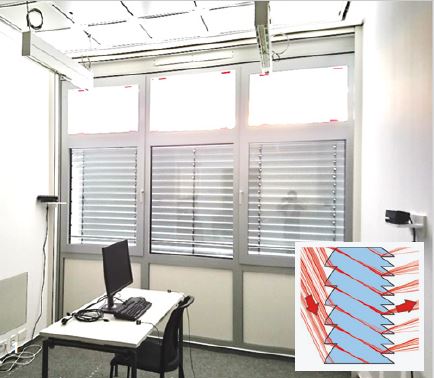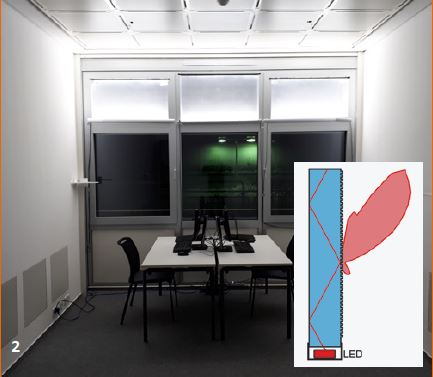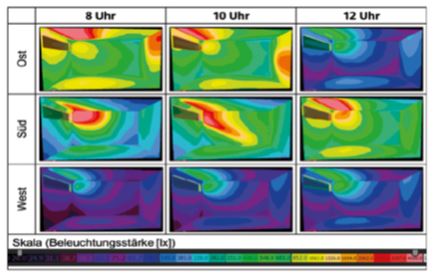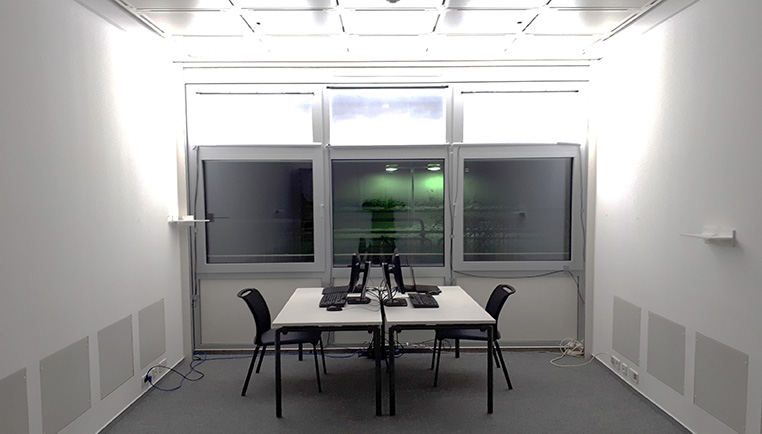
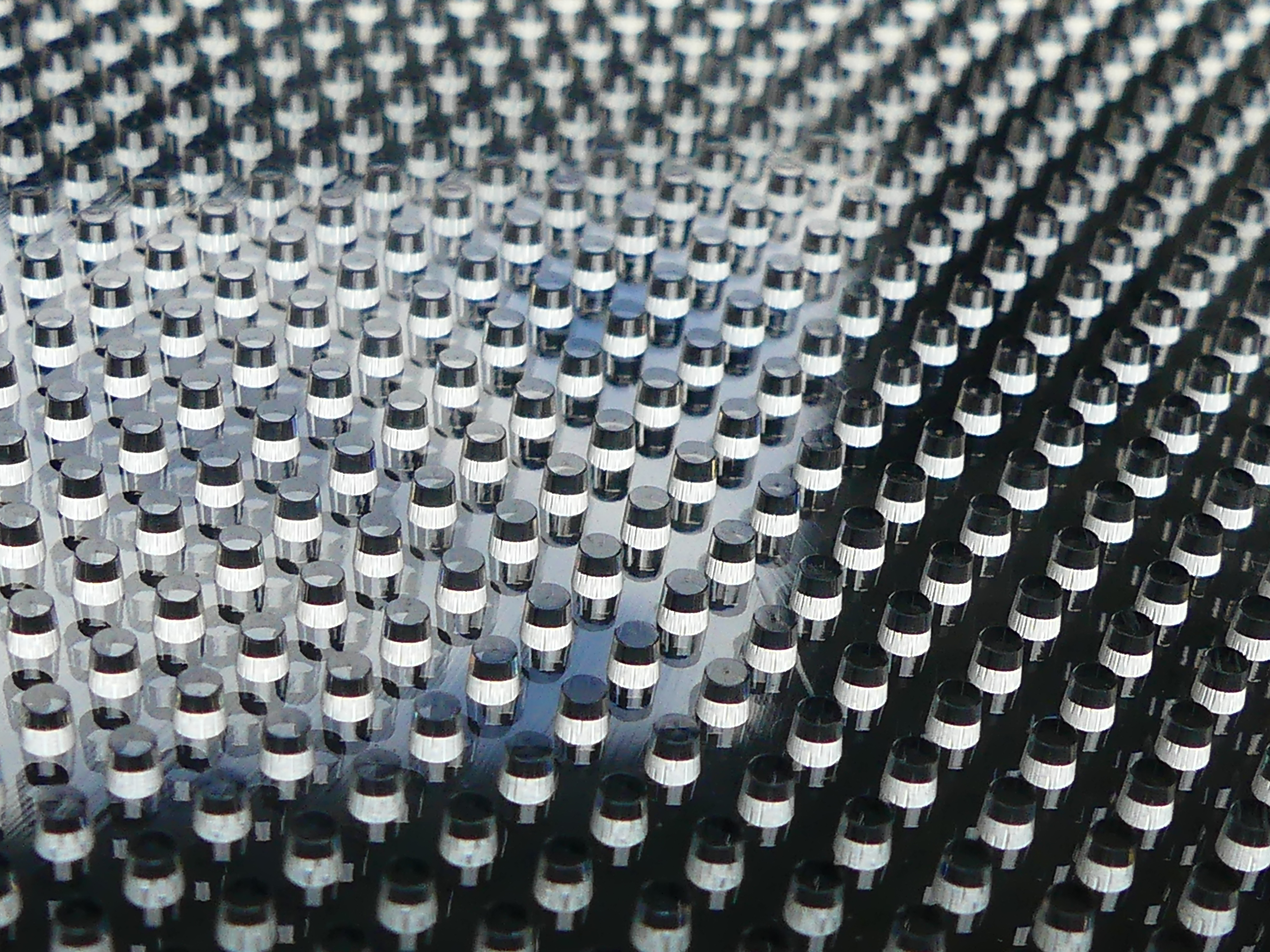
If a desk is far away from a window, illumination from incidental daylight is often not sufficient and additional lighting is required. New micro-optical structures offer solutions to this: Without causing glare, they direct daylight to areas inside a
building that are far away from the façade and also enable workplaces close to windows to be electrically illuminated via transparent façades. In the future, these new components will be able to improve the energy efficiency, life cycle assessment and quality of life in such areas inside buildings - and they also offer more design freedom.
From laboratory scale to built-in façades
The starting point is two optical structures applied to transparent substrate layers. Nine partners were involved in the joint project entitled “TALED” that was funded by the Federal Ministry of Economics and Energy (BMWi). The first structure is installed in the façade and directs daylight deep into areas of a building without causing glare. The second is a light-coupling structure. This emits LED light, which is fed in via the edges of the panel, from the surface of the substrate layer in a specific way. The element itself remains transparent when viewed from the front. The structure can be used directly in façade glazing as well as in lighting systems. The two basic structures had already been constructed as laboratory samples before the project started. In course of the project, these structures were optimized, scaled to the practical size of 1.2 m × 0.6 m using newly-developed production processes such as hot stamping and UV nano-imprinting, and integrated into laminated panels. Larger sizes can also be produced. These processes make it possible to structure rigid PMMA sheets, glasses and films. The predicted cost of the ready-to-install PMMA light-deflecting micro-optics is 30 to 35 € per square meter. To compare: the light-deflecting stacked PMMA rods of a product with a similar function cost around 250 € per square meter. The predicted cost of the light-coupling structure is about the same.
Evaluation and architectural application concepts
Lighting and energy parameters were determined and prepared for implementation in planning tools. The expert teams also made an approximate life cycle assessment and estimated the effect on a building’s energy performance. The result: thanks to the light-deflecting façade, the energy required to light an office area was reduced by 58 percent during the measurement period, while user acceptance increased significantly. Furthermore, a lot less PMMA was needed: compared to the existing product made from stacked acrylic glass rods, PMMA requirements were cut by more than 75 percent.
More design freedom
The light-coupling elements integrated into the façade supplied enough light to the areas near the façade, but the luminous flux was lower than with conventional lighting for the same energy input. This is mainly due to the indirect lighting, where absorption losses occur at ceiling level. In contrast, the project demonstrated the design advantages of the solution - such as the open ceiling and transparency of the light sources - and the higher level of user acceptance over conventional lighting. The scientists also developed examples of architectural application concepts, both for new buildings as well as for renovating old buildings. These allowed practical conclusions to be drawn about the future use of the systems.
